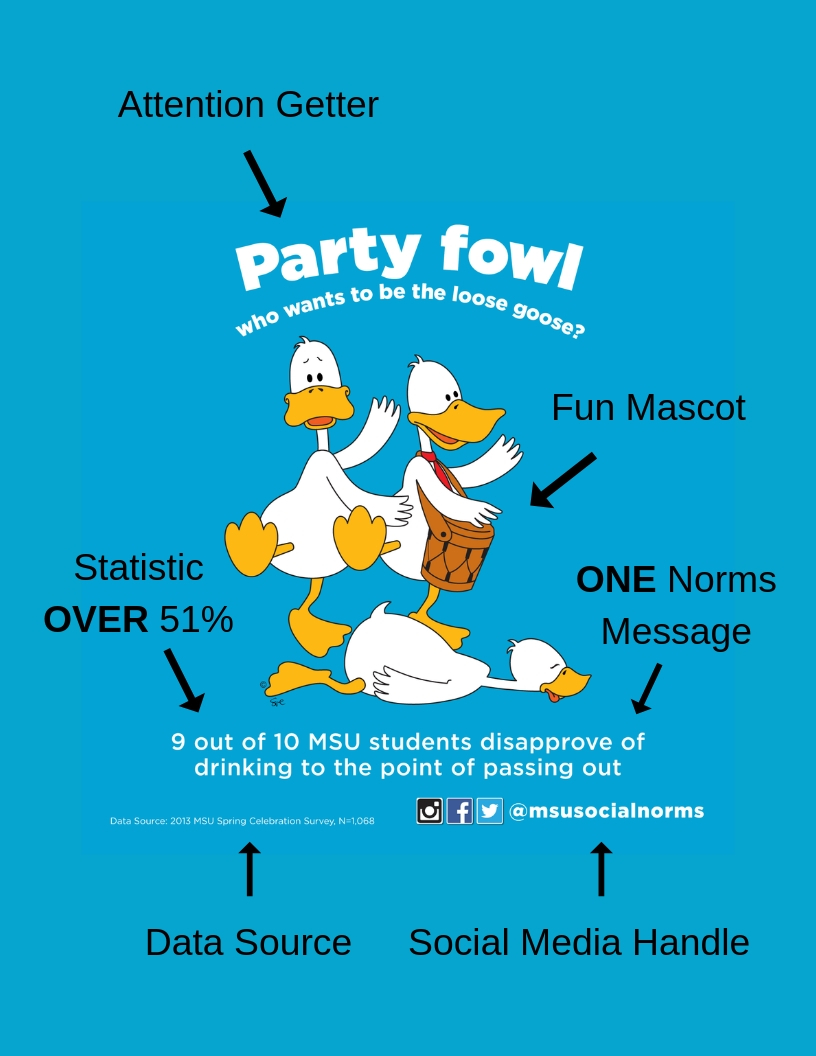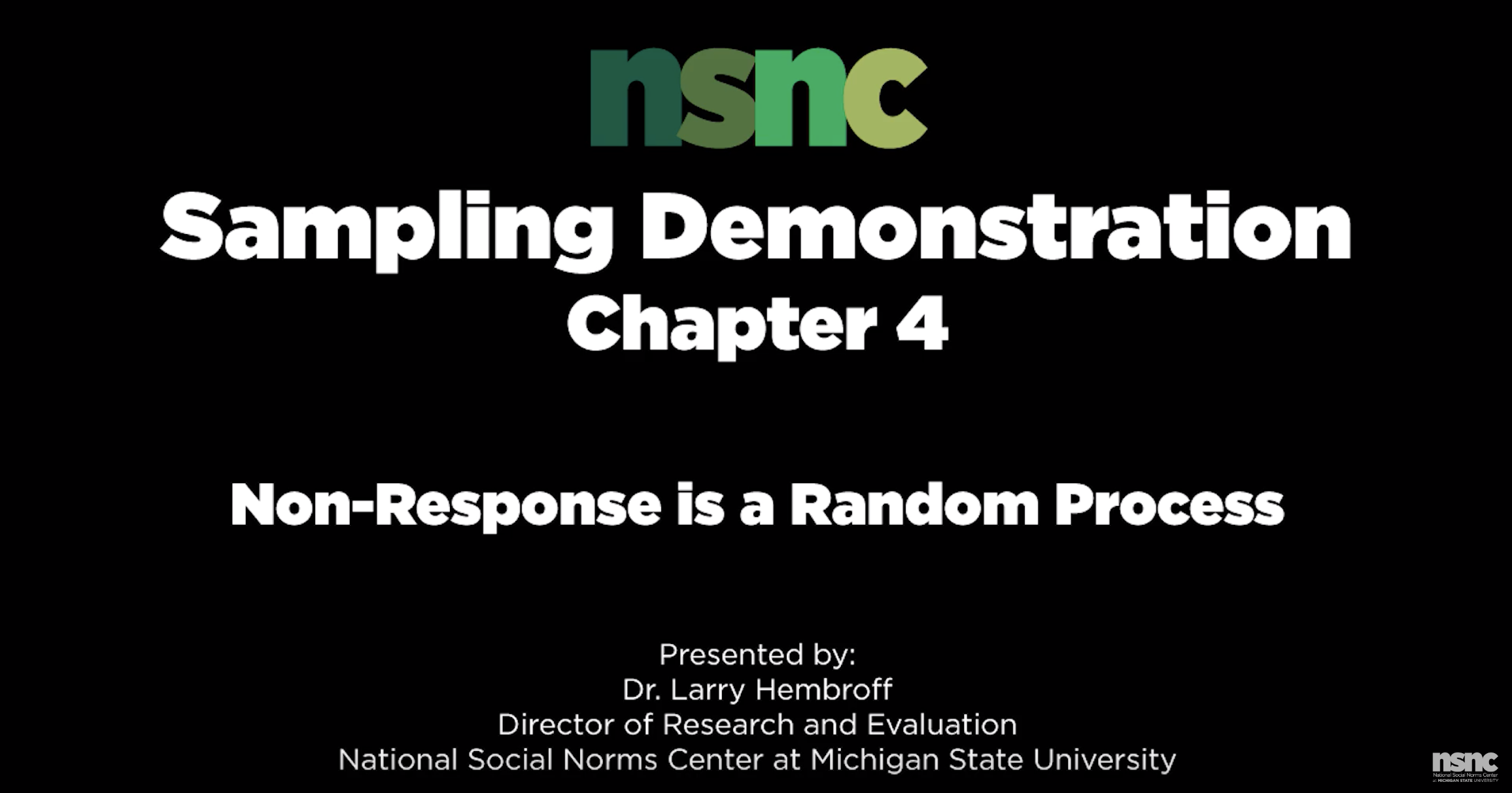Social norms marketing campaigns are often designed to reach an entire “population”: all the students in a college or school, all the members of a community, all the workers in a company. This is an efficient and effective way to address common misperceptions and begin a cultural change in regards to a health or risk behavior. However, it can also be very useful to divide a large audience into relatively homogenous subgroups, or “segments” and tailor messages and approaches for each segment.
For example, if your audience is widely diverse in age or racial/ethnic backgrounds, socioeconomic status or risk status, you might need messages that differ in image and tone to reach different segments in ways that are meaningful to them. You may also need to identify different avenues and outlets for disseminating your message.
Creating segments
If audience segments are not well developed for the problem you are addressing, Slater (1995) recommended a system to identify segments:
1. Literature search for current evidence about the problem and its antecedents
2. Interview key informants
3. Collect data from the audience: preliminary focus groups with a small sample; create a survey based on focus group results to administer to a larger sample; identify clusters within the survey results; focus groups with members of the clusters/segments you’ve identified
4. Test messages with targeted segments
Even if you think you already have a pretty good idea of how to segment your audience, and which segments you want to focus on, it is still important to do focus groups with members of these segments, and pretest the messages and campaign materials you develop with them as well.
College students and alcohol
Many studies on college students and alcohol have been done. Some of the ways to segment college audiences include:
o Alcohol consumption patterns: frequency, amount, location, event
o Gender: norms and experiences of negative consequences from drinking tend to differ between men and women (Foster 2014)
o Peer group in school: i.e., cohort year (freshman, sophomore, etc.), fraternity/sorority membership, varsity athletes
o Age: i.e., under 21 and 21+
o Race/ethnic identity: Members of a racial/ethnic group may be more likely to perceive others of the same background as a primary peer group on which they perform social comparisons (Martin et al., 2013)
o Type of residence: dormitory or off-campus housing
By narrowing down a group you’re trying to reach, it will be easier to develop effective messages and to find the appropriate channels to reach a particular audience segment.
Target “Low Hanging Fruit” or Highest Risk Groups?
 Since social norms marketing campaigns often communicate through mass media and other broad channels, the messages may have the best success with audience segments that are “on the fence” about engaging in risky drinking behaviors. For example, light or moderate drinkers may be more likely than heavy drinkers to heed the campaign’s messages, and to choose alternative activities rather than drinking. Heavy drinkers, on the other hand, may require more individualized and intensive interventions to change their behavior.
Since social norms marketing campaigns often communicate through mass media and other broad channels, the messages may have the best success with audience segments that are “on the fence” about engaging in risky drinking behaviors. For example, light or moderate drinkers may be more likely than heavy drinkers to heed the campaign’s messages, and to choose alternative activities rather than drinking. Heavy drinkers, on the other hand, may require more individualized and intensive interventions to change their behavior.
References
Foster, C., Caravelis, C., & Kopak, A. (2014). National College Health Assessment Measuring Negative Alcohol-Related Consequences among College Students. American Journal of Public Health Research, 2(1), 1-5.
Martin, J. L., Groth, G., Buckner, L., Gale, M. M., & Kramer, M. E. (2013). Perceived drinking norms among black college students: The race of reference group members. Addictive Behaviors, 38(10), 2586-2588.
Slater, M. D. (1995). Choosing audience segmentation strategies and methods for health communication. In E. Maibach & R. L. Parrot (Eds.), Designing health messages: Approaches from communication theory and public health practice. (pp. 186-198). Thousand Oaks, CA, US: Sage Publications, Inc.






